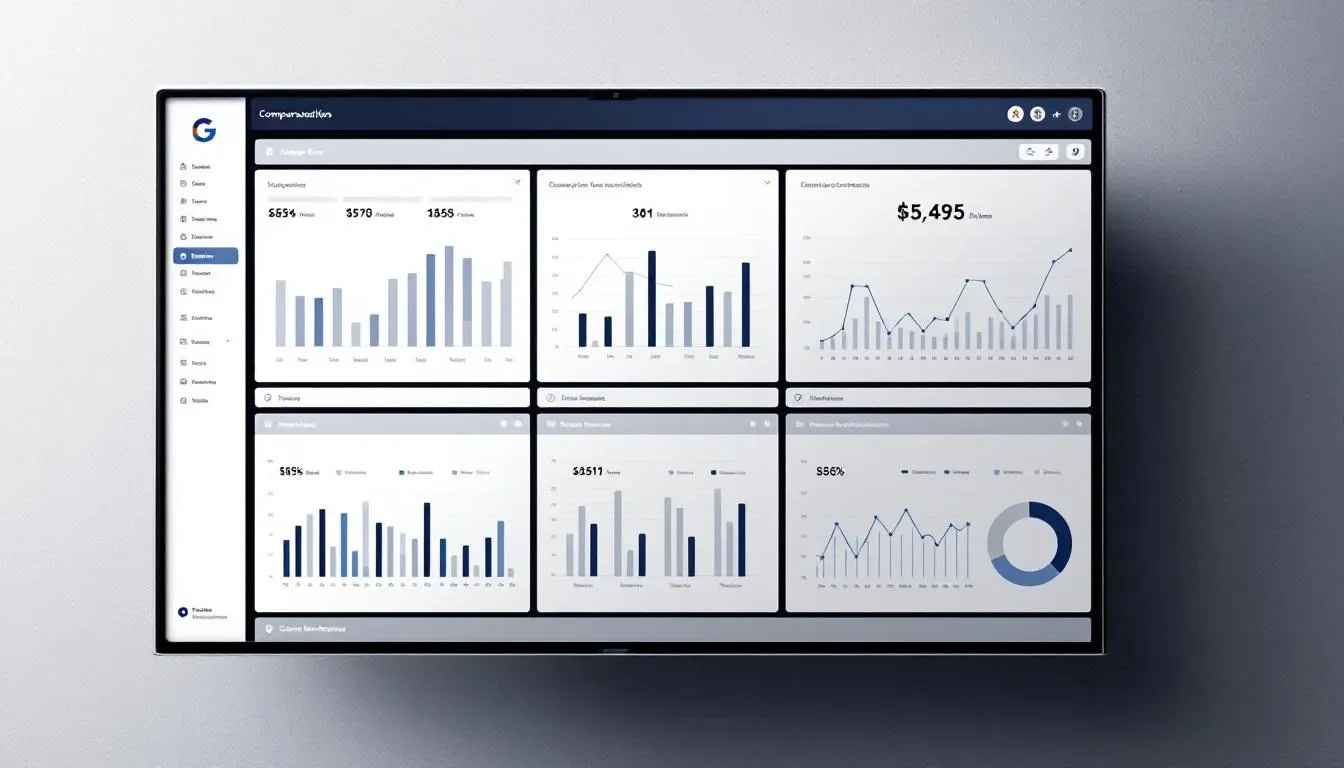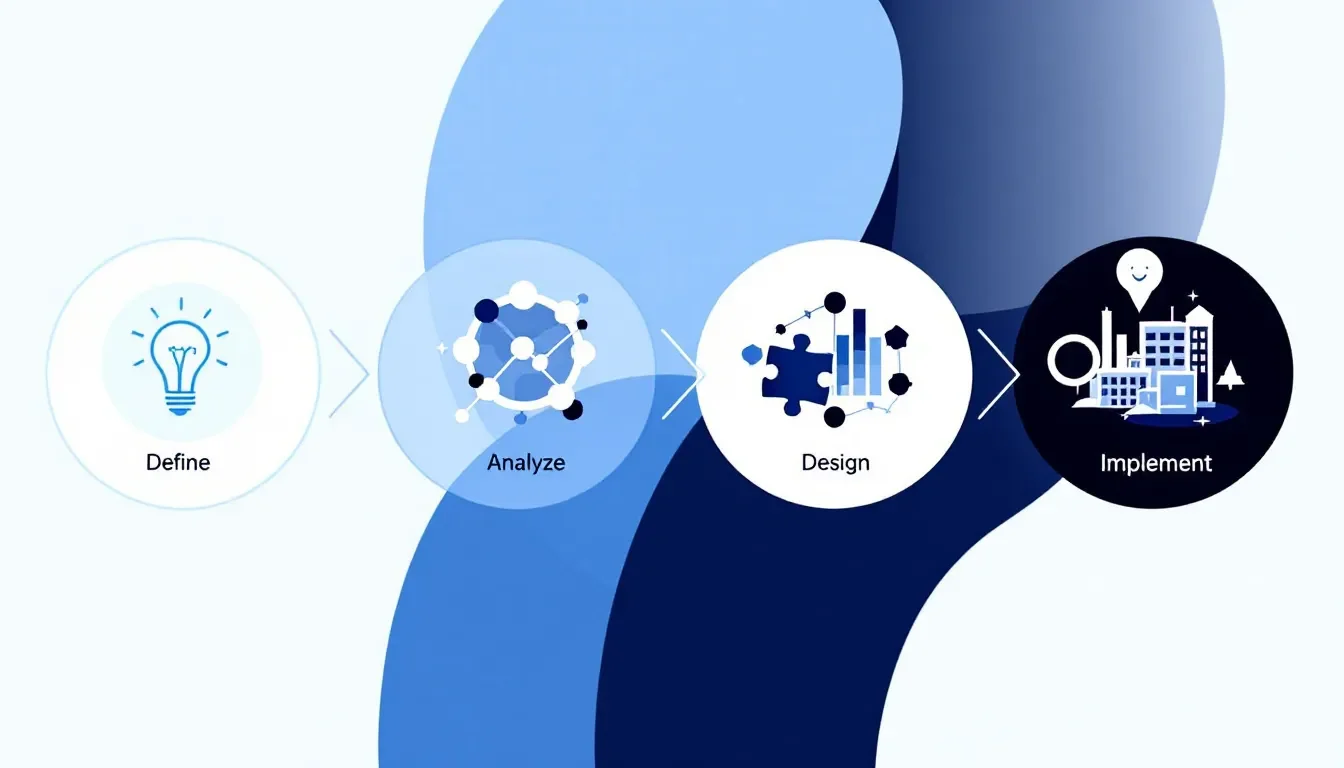Find the Best Payscale Alternative for Your Organization
The compensation management software landscape has transformed dramatically since 2020, driven by tightening labor markets, increasing demands for pay equity, and evolving expectations for seamless digital experiences. The top PayScale alternatives include SalaryCube, Pave, CompXL, SimplyMerit, and CompTrak. While PayScale once dominated as the unchallenged market data leader, organizations seeking payscale competitors now have access to innovative platforms that address modern workforce challenges with superior user experiences, flexible implementation, and real-time compensation data.
Organizations are increasingly exploring alternatives to PayScale as their compensation strategies evolve beyond what traditional platforms can deliver. The legacy strengths that made PayScale a market leader—extensive salary data and analytical benchmarking tools—can no longer compensate for growing needs in several critical areas: rapidly changing market conditions requiring real-time global compensation data, support for flexible work models, and seamless integration within broader hr systems.

Key factors driving the search for payscale alternatives include complaints about PayScale’s dated interface, inflexible contract terms, lengthy implementation timelines, and rigid workflows that don’t adapt to modern compensation planning needs. Today’s HR and compensation leaders demand platforms that deliver real-time insights, customizable analytics, and solutions that integrate compensation workflows with existing hr systems, reflecting a fundamental shift in both operational expectations and technological possibilities.
The compensation management software market in 2025 encompasses cloud-based platforms that help organizations manage every aspect of employee compensation: salary benchmarking, pay equity analysis, merit cycles, bonus planning, pay transparency, and compliance reporting. This market has evolved from isolated salary calculators into comprehensive compensation management solutions used for both strategic workforce planning and day-to-day operations.
This guide will help you understand the competitive landscape, evaluate top payscale competitors based on real user feedback and performance metrics, and select the compensation management platform that best fits your organization’s unique needs and budget constraints.
What Makes These Compensation Platforms Unique?
Payscale – Market Data Leader with Limitations
PayScale maintains its position as a compensation management platform through several enduring strengths. The platform features one of the largest proprietary databases of salary benchmarking data, reportedly sourced from millions of employer-submitted records, employee inputs, and partnerships with industry associations. PayScale’s analytical tools, powered by AI-driven workflows, enable organizations to adjust benchmarks based on location, experience, industry, and company size.
The platform’s core offerings include comprehensive compensation planning, survey participation programs, and talent market analysis capabilities. These features have made PayScale a reference point for compensation decisions across large segments of the US and global markets, particularly among mid-to-large enterprises, HR consultants, and organizations with established compensation structure frameworks.
However, PayScale’s limitations have become increasingly apparent to modern users. The platform suffers from a dated user interface that many find unintuitive, leading to steep learning curves for new users. Implementation timelines often stretch across several months for enterprise accounts, while contracts tend to be rigid with limited customization options for specific organizational needs.

Integration challenges with newer HR tech stacks present additional friction points, with customers reporting frustration over closed data ecosystems and limited API-driven extensibility. These pain points have created opportunities for more agile payscale competitors to capture market share by addressing these fundamental user experience and flexibility concerns.
Modern Payscale Competitors – Enhanced User Experience and Flexibility
Contemporary compensation platforms directly target PayScale’s identified weaknesses through streamlined, intuitive user interfaces that dramatically reduce onboarding time and improve overall usability. Modern payscale alternatives often tout implementation timelines measured in weeks rather than months, with some platforms achieving full deployment in days for smaller organizations.
These platforms prioritize integration capabilities, with virtually all major competitors providing open APIs, pre-built HRIS connectors, and customizable dashboards that work seamlessly with existing hr systems. Advanced features have become standard across the competitive landscape: real-time market data that updates continuously, personalized compensation insights for individual employee profiles, and pay equity monitoring with compliance-ready reporting capabilities.
Contract flexibility represents another significant advantage, with many providers offering tiered, modular pricing structures and low-risk pilot programs that allow organizations to test platforms before committing to long-term agreements. This approach reduces switching friction and enables businesses to scale their compensation management solutions as they grow.
Payscale vs. Competitors: Key Differences That Matter
Data Accuracy and Reliability
PayScale’s compensation data collection methodology combines proprietary datasets with crowdsourced employee input and third-party surveys, creating extensive coverage but introducing potential accuracy concerns. Some users report encountering outdated information, incomplete data for niche positions, or skewed results from self-reported salary figures that lack proper verification processes.
Modern payscale competitors address these reliability issues through innovative data collection approaches. Platforms like Pave integrate directly with ATS and payroll systems to access real-time compensation details securely, while solutions such as Salary.com and beqom emphasize validated survey participation from enterprise clients rather than anonymous self-reports.
The impact of these data quality differences extends beyond simple accuracy concerns. Compensation leaders report that unreliable or outdated market data leads to costly mistakes in salary offers, erodes employee trust, and impairs organizations’ ability to remain competitive in attracting top talent. Modern platforms’ emphasis on data validation and real-time updates directly addresses these business-critical concerns.
User Experience and Interface
PayScale’s interface, while functional, is widely perceived as dated and complex, creating productivity barriers that impact team efficiency. Users frequently report frustration with navigation complexity, steep learning curves for new team members, and reliance on customer support for basic tasks that should be intuitive.
Top payscale alternatives prioritize modern, cloud-native user experiences with simplified dashboards, customizable widgets, and mobile-friendly interfaces. User feedback from platforms like G2 and Capterra consistently shows higher satisfaction rates—often exceeding 90% for UI/UX components—with particular praise for ease of onboarding, in-platform guidance, and rapid report generation capabilities.

This user experience gap translates into measurable productivity differences. Teams using modern platforms report significant reductions in time spent on routine compensation tasks, improved data accessibility for decision-making, and enhanced ability to provide self-service capabilities to managers and employees.
Implementation and Contract Flexibility
PayScale implementations can extend across several months, particularly for large enterprise deployments, due to complex data migration requirements, extensive configuration needs, and limited dedicated support resources. Contract structures typically involve annual commitments with restrictive cancellation clauses, while mid-term requirement changes often trigger additional fees or extensive renegotiation processes.
Modern compensation management solutions offer dramatically improved implementation experiences. Leading payscale competitors provide pilot programs, flexible month-to-month or usage-based pricing models, and dedicated implementation support that can achieve go-live timelines as short as two to six weeks, even for organizations with hundreds or thousands of employees.
Cost of ownership advantages extend beyond implementation speed. Many alternatives offer transparent pricing with minimal hidden fees, modular licensing that allows organizations to pay only for features they use, and contract terms that accommodate growth and changing requirements without punitive restructuring costs.
What Compensation Teams Are Saying
User reviews across platforms like G2, Capterra, and Reddit reveal consistent themes regarding PayScale’s user experience challenges. Common complaints include difficulty navigating the interface, delays in customer support response times, inflexible workflows that don’t accommodate unique organizational processes, and frustration with contract terms and renewal processes.
Teams cite specific productivity impacts: extended time required for basic compensation analysis tasks, inability to generate custom reports without technical support, and challenges integrating PayScale data with other HR tools. While users acknowledge PayScale’s data breadth and analytical capabilities, many express that the overall experience feels outdated compared to newer solutions.
Conversely, organizations that have migrated to modern payscale alternatives report significantly improved experiences. Users consistently praise faster implementation timelines, intuitive interfaces that reduce training requirements, and responsive customer support that resolves issues quickly.

Perhaps most importantly, teams report measurable ROI improvements after switching platforms. The combination of faster implementation, more intuitive analytics, and reliable compensation data reportedly leads to tangible improvements in compensation cycle efficiency, enhanced employee trust through better pay transparency, and improved retention rates when companies can make more competitive and timely compensation decisions.
Top 5 Payscale Competitors in 2025
SalaryCube
SalaryCube stands out as the best alternative to PayScale due to its commitment to providing the most up-to-date and comprehensive salary benchmarking data across various industries, locations, and company sizes. Unlike PayScale’s reliance on crowdsourced data, SalaryCube ensures data accuracy and relevance by continuously collecting and analyzing compensation information from multiple reliable sources, including survey data and market research. This robust approach empowers organizations to make confident, data-driven compensation decisions that keep them competitive in today’s dynamic labor market.
One of SalaryCube’s key advantages is its user-friendly interface, designed to simplify the complexities of compensation management for HR professionals and business leaders alike. The platform offers customizable reports and benchmarking tools that enable organizations to tailor their compensation strategies to their unique needs. Additionally, SalaryCube’s seamless integration capabilities with existing HR systems facilitate smooth data flow and reduce manual workload, making it easier for companies to manage their compensation processes within a single system.
Cost effectiveness is another critical factor that positions SalaryCube ahead of PayScale for many organizations, especially smaller companies and mid-market businesses. SalaryCube offers flexible pricing options and scalable solutions that accommodate different company sizes and budgets without compromising on functionality or data quality. This combination of accurate salary data, an easy to use interface, and affordability makes SalaryCube the ideal choice for organizations seeking a modern, reliable, and comprehensive compensation management platform as a superior alternative to PayScale.
Compport
Compport operates as a comprehensive compensation management platform with clear focus on modular functionality spanning salary benchmarking, merit and bonus cycles, pay equity monitoring, and custom reporting capabilities. The platform serves over 300 companies across more than 30 countries, emphasizing global reach and compliance support for international organizations.
The technology infrastructure features real-time data updates, adjustable workflows, and multi-currency support that accommodates diverse organizational structures. Implementation typically completes within 30 days, supported by flexible pricing models that include both pay-as-you-go options and annual subscriptions, making it particularly attractive for scaling enterprises.
Users consistently cite Compport’s intuitive design and end-to-end lifecycle management as key differentiators from traditional solutions. The platform’s strength in managing complex compensation plans while maintaining user-friendly interfaces has made it a popular choice among organizations seeking to modernize their compensation strategies without sacrificing functionality.
Pave
Pave has rapidly gained traction among high-growth technology companies and startups through its focus on delivering transparent, real-time market data within a streamlined user experience. The platform specializes in integration capabilities, featuring ATS and payroll synchronization, API-powered custom workflows, and real-time, crowd-validated compensation data.
Key features include comprehensive benchmarking tools for roles ranging from individual contributors to executive positions, equity analytics capabilities, and visualization widgets designed for audiences from CEO level to individual employees. Pave’s implementation timeline routinely completes in under two weeks, while its modular pricing structure particularly appeals to fast-scaling small businesses and mid-market organizations.
The platform’s consumer-app-level user experience has earned consistently high user satisfaction ratings, with teams praising the intuitive interface, rapid report generation, and transparent compensation insights that support both strategic planning and employee communications.
Salary.com
As a pioneer in salary research, Salary.com maintains its market position through validated compensation data derived from comprehensive surveys rather than crowdsourced averages. The CompAnalyst solution encompasses benchmarking, pay equity analysis, budgeting, and robust analytics capabilities with particular strength in data reliability and integration with leading HR systems.
Salary.com’s global reach serves enterprises with complex, cross-border payroll requirements, making it especially valuable for large-scale compensation modeling and compliance management. The platform’s target market includes Fortune 500 companies and global consultancies, though modular pricing options have expanded accessibility to mid-market organizations.
The platform’s emphasis on data validation and survey-based methodology provides higher confidence levels for compensation decisions, particularly important for organizations in highly regulated industries or those managing complex global compensation structure requirements.
beqom
beqom targets enterprises requiring sophisticated, global compensation infrastructure capable of supporting thousands of roles across multiple languages and currencies. The platform excels in handling complex merit cycles, long-term incentive planning, and regulatory compliance requirements while maintaining integration with performance management systems.
Features include comprehensive pay equity modules, advanced analytics suitable for multinational organizations, and white-glove implementation services with dedicated support for strategic transformation projects. While implementation timelines may be longer than some alternatives, beqom provides the depth and customization required for large enterprises with complex compensation management solutions needs.
The platform’s strength lies in its ability to handle intricate global compensation requirements while maintaining compliance across different regulatory environments, making it particularly suitable for large enterprises and multinational corporations with sophisticated compensation structures.
HRSoft
HRSoft delivers a unified, cloud-native SaaS platform designed to streamline comprehensive compensation processes including budgeting, salary review cycles, bonus allocation, and pay-for-performance management. The solution has gained particular traction in highly regulated industries such as healthcare, finance, and manufacturing due to specialized compliance reporting and customizable audit trail capabilities.
Implementation guidance from HRSoft consultants typically achieves go-live timelines under 60 days, supported by strong post-implementation support and ongoing consultation services. The platform supports integration with all major HRIS vendors, while customers frequently cite its configurability and industry-specific modules as distinct competitive advantages.
Organizations in regulated industries particularly value HRSoft’s ability to maintain detailed compliance documentation while supporting complex approval workflows and audit requirements that may not be adequately addressed by more general-purpose compensation platforms.
Which Payscale Alternative is Right for Your Organization?
Choose Modern Platforms if you want:
Organizations seeking modern, flexible compensation management solutions should evaluate providers like Pave and Compport when their priorities include improved user experience and intuitive interfaces that reduce training requirements and increase team productivity. These platforms excel for businesses that value implementation agility, offering rapid deployment timelines and flexible contract terms that accommodate growth and changing requirements.

These solutions particularly benefit companies needing enhanced integration capabilities with existing hr systems, real-time market data for dynamic compensation decisions, and advanced analytics that support data-driven compensation strategies. Organizations with hybrid or decentralized workforce models find these platforms especially valuable due to their modern approach to handling flexible work arrangements and global talent management.
Choose Enterprise Solutions if you want:
Companies with complex, global, or highly regulated compensation requirements should focus their evaluation on enterprise-centric solutions including beqom, Salary.com, and HRSoft. These platforms provide the depth and sophistication required for managing intricate compensation structure frameworks across multiple countries, currencies, and regulatory environments.
Large enterprises, financial services firms, and organizations with complex equity and incentive structures particularly benefit from these solutions’ advanced pay equity and compliance modules, detailed audit capabilities, and dedicated implementation support. The additional investment in implementation time and cost typically pays dividends through comprehensive functionality that supports sophisticated compensation strategies and regulatory compliance requirements.
Organizations seeking specialized features for specific industries—such as healthcare, manufacturing, or financial services—will find these enterprise solutions offer the depth of functionality and compliance support that general-purpose platforms may not adequately address.
Making the Switch: Implementation and Migration Considerations
Transitioning from PayScale to alternative compensation platforms involves significant technical and organizational considerations that require careful planning and execution. Data migration represents one of the most critical challenges, where leading payscale competitors differentiate themselves through dedicated migration support services, automated data cleansing tools, and sandbox environments for validation and testing.
Modern platforms typically support bi-directional integration with core HRIS systems including Workday, SAP, and UKG, along with major payroll platforms and recruiting tools. This integration capability ensures that compensation data flows seamlessly across the broader HR technology ecosystem, reducing manual data entry and improving accuracy.
Implementation timelines vary significantly across different platform types. While legacy solutions may require several months for complete deployment, modern providers can often deliver full setup, integration, and team training within weeks. This acceleration stems from cloud-native architectures, pre-built integration connectors, and streamlined configuration processes.
Change management considerations are equally important for successful transitions. Leading vendors provide comprehensive documentation, interactive training modules, and structured onboarding campaigns designed to ensure user adoption and minimize operational disruption during the transition period.
Cost-benefit analyses based on real customer case studies demonstrate quantifiable improvements following platform switches. Organizations typically report reducing compensation cycle time by up to 40%, achieving more accurate salary benchmarking through improved data quality, and experiencing increased employee trust through enhanced pay transparency—directly impacting retention rates and overall satisfaction metrics.
The verification successful waiting period for full platform benefits typically ranges from one to three compensation cycles, during which organizations can measure improvements in process efficiency, data accuracy, and user satisfaction compared to their previous PayScale implementation.
When evaluating total cost of ownership, organizations should consider not only direct licensing costs but also implementation services, ongoing support requirements, integration complexity, and the productivity gains achievable through improved user experience and workflow efficiency. Many organizations find that higher-quality platforms with superior user experiences generate positive ROI within the first year through improved team productivity and better compensation decisions.
Conclusion
The compensation management software landscape in 2025 offers organizations compelling alternatives to PayScale that address modern workforce needs through superior user experiences, flexible implementation approaches, and real-time compensation data capabilities. While PayScale maintains market presence through extensive salary data and established analytical tools, emerging platforms provide transformative advantages for organizations willing to embrace innovation.
When exploring payscale competitors, organizations should prioritize solutions that align with their specific requirements: modern platforms like Pave and Compport for agility and user experience, or enterprise solutions like beqom and Salary.com for complex global requirements. The key to successful platform selection lies in matching technological capabilities with organizational needs, budget constraints, and growth objectives.
The evidence from user feedback, implementation case studies, and performance metrics clearly indicates that organizations making strategic transitions to modern compensation platforms realize measurable improvements in process efficiency, data accuracy, and team satisfaction. As the talent market continues evolving and employee expectations for pay transparency increase, selecting the right compensation management solution becomes increasingly critical for organizational success.
For companies currently experiencing limitations with PayScale—whether through user experience challenges, implementation inflexibility, or integration constraints—the current market offers mature, proven alternatives that can deliver superior results while supporting modern workforce requirements and strategic compensation objectives.
Optimizing Your Compensation System: Strategies for Success
A compensation system determines how employees are rewarded

SalaryCube vs Mercer: Which Compensation Benchmarking Platform is Right for Your Organization?
Salary benchmarking involves evaluating a company's internal salaries based on their external value
